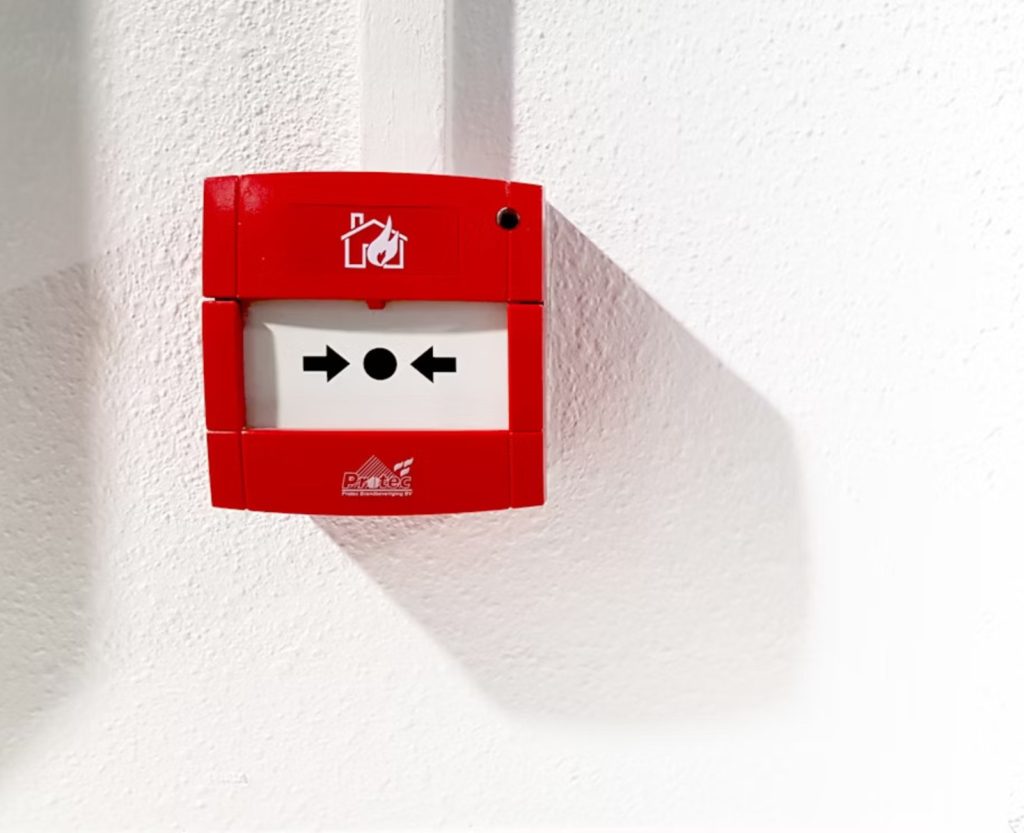Types of smart contract platforms
As the demand for smart contracts continues to grow, blockchain platforms are working harder to upgrade their execution ability, and new and specialized smart contract platforms are being added to the market.
Most platforms are different from each other function-wise. Yet, they are all based on three essential qualities:
- Scalability: How many computations can it process per second?
- Security: How secure is it? How much resources should be spent to corrupt network consensus?
- Decentralization: How many full nodes does the smart contracts platforms have?
However, most apps cannot successfully satisfy all those qualities. They must trade off one property and prioritize the two. Each type will work in different use cases.
- Scalability + Security – Decentralization: This combination is best for online marketplaces and global payment networks. Apps specialized in these two attributes will offer security and high Transaction per Second (TPS);
- Scalability + Decentralization – Security: This is the best choice for handling high TPS in a decentralized manner. Common use cases include crypto exchanges like Binance Smart Chain, which has fast transaction speed and strict security measures;
- Security + Decentralization—Scalability: If your use case, such as social media networks, requires a high level of personal data security and user engagement, security and decentralization are your best bets.
Most top blockchain platforms, such as Ethereum, BNB Chain, and Solano, support smart contract execution. These platforms are also known as layer-1 blockchain, acting as the foundation processing the transaction. But as I mentioned before, these platforms have their trade-offs, and to improve the weaker aspect, layer-2 was born.
Acting as secondary frameworks that work seamlessly and enhance one specific functionality of layer-1, layer-2 can make smart contracts more secure and faster. Some layer-2 even focus on smart contract deployment only. We also have layer-0, which focuses on improving the underlying scalability and interoperability of layer-1.
In this article, we will cover both layer-0, layer-1 and layer-2, pinpointing how and when you should collaborate or use what.

Criteria to choose a suitable smart contracts platforms
Businesses should make their smart contracts platform of choice based on these categories:
- Security and scalability: These are the first and foremost qualities a smart contract platform should have. Make sure components like protocol, dApp, and smart contracts are thoroughly audited. There must be enough bandwidth to accommodate more users.
- TPS and fees: Pay attention to the TPS and fees. Choose a smart contract platform with high TPS to handle lightning-speed transactions. Excessive fees are financially detrimental in the long run, so you might want an affordable smart contracts platform.
- Ecosystem and liquidity. Assessing the smart contract platform’s structure before use is a must. Check the number and vibrancy of the smart contract platform’s components. Also, the more liquidity the smart contract platform possesses, the more chance projects develop successfully.
- Available tools and smart contract programming languages: Each smart contract platform has its language. Research the language and examine its security and syntax. Find out what frameworks and tools the platform supports.
- Consensus algorithm: Each blockchain’s nodes reach an agreement through different consensus mechanisms. It is important to determine the mechanisms of your potential smart contract platforms and evaluate them based on your values.
- Leader’s reputation: Research the blockchain leadership you plan to use. Ask questions about team members’ safety, security, development plan, and reliability.
Comparison of top smart contracts platforms of 2025
Remember that this information is just for reference and public by the vendor, meaning some top smart contract platforms show great number in test, but it’s way lower in reality. TPS and finality time can change depending on the complexity of your contract and transaction.
*Click on the platform name to quickly jump into their detailed review!
| Platform | Turing | Consensus mechanism | Transaction per second (TPS) | Finality time | Execution environment |
|---|---|---|---|---|---|
| Ethereum | Complete | PoS | 15-30 | ~13 minutes | EVM |
| Solana | Complete | PoH + BFT | 65,000+ (in test) | ~ 1 minute | Solana VM |
| Binance | Complete | PoSA | 2,000 (peak) | Under 5s | EVM |
| Stellar | Not use | FBA | 150 | Under 5s | Docker |
| Avalanche | Complete | Snowman + BFT | 4,500 | 1s | Avalanche VM |
| Algorand | Incomplete | Pure PoS | 7,500 (in test) | 1s | Teal + Algorand VM |
| Tezos | Complete | Liquid PoS | 40 | ~30s | Michelson |
| Hyperledger | Limited | Varies (pluggable) | Private | Private | REE |
| Corda | Limited | Raft | Private | Private | Java VM |
| Polygon | Complete | PoS | 65,000 (in test) | ~ 1 minute | EVM |
| Chainlink | Complete | Off-chain reporting | N/A | N/A | N/A |
| Stacks | Incomplete | PoS + PoT | N/A | ~10 minutes | Clarity |
| Arbitrum | Complete | Optimistic Rollup | 40,000 (in test) | 5-15 minutes | EVM |
| Polkadot | N/A | Nominated PoS | Depends | Depends | Wasm |
| Cosmos | N/A | BFT | Depends | Depends | Wasm |
*A few notes:
- Hyperledger Fabric and Corda are permissioned blockchains, therefore they are not open to the public.
- Chainlink is a decentralized oracle network. Despite supporting smart contract development and execution, it’s not a standalone smart contract platform.
- Polkadot and Cosmos are interoperable blockchain ecosystems. The TPS and finality time will vary depending on the specific parachains or application.
1. Ethereum – L1
Ethereum is one of the most renowned blockchain platforms, best known as Ethereum, Ether, and ERC-20 tokens. The platform excels in smart contract deployment, pioneering the growth and development of this wave. Today, most developers start with Ethereum to learn how to create smart contracts.
Ethereum has vital standardization and scalability. There is a published defined set of rules for developers to follow, reducing smart contract development risks. As the smart contract platform with the highest market capitalization, Ethereum has its native programming language, Solidity, which supports standardization and smart contract creation.
However, Ethereum has its downsides. There have been several security issues, indicating severe flaws in the platform.

2. Solana – Open-source L1
Solana is among the biggest open-source smart contract platforms in early 2025. Thanks to a low-level virtual machine and Rust programming language, it has swift transaction speed. The combination allows developers to perform thousands of transactions per second at a high rate with economic opportunities on a public blockchain.
The strongest points of Solana are security. Businesses adopting Solana pay low fees to install and use smart contracts, making transactions more affordable. This smart contract platform is also compatible with Ethereum’s cross-chain integration.

One weakness of Solana is frequent outages. So far, there have been 11 tremendous downtimes and 3 minor cases, making Solana unreliable availability-wise. Also, despite being a blockchain network, Solana is not entirely decentralized since its top validators own nearly half the network stake.
3. Binance smart chain – L1
Binance Smart Chain is a proof-of-stake authority consensus mechanism built to optimize speed and cost per transaction. Since its launch, Binance Smart Chain has ranked among the top smart contracts platforms and is the third in market capitalization and processes.
Due to its EVM compatibility, developers can build smart contracts with Solidity and access Uniswap and other prominent Ethereum dApps right on the Binance Smart Chain. The launch of the ZK BNB, a zero-knowledge privacy-maintaining infrastructure, enhances platform users’ privacy.
However, this smart contract platform has several disadvantages:
- Binance Smart Chain has only 50 validators, meaning the validation power and centralization must be evenly distributed.
- It faced charges regarding the rollout of smart contracts apps and pleaded guilty to failure to maintain an anti-money-laundering program.
4. Stellar – L1
Founded in 2014, Stellar is among the earliest smart contracts platforms. It is a developer-friendly, Rust-based smart contracts platform designed for scale and sensibility. Stellar is highly approved by experts after several successful industrial use cases, especially in decentralized finance and BFSI in general.
One of Stellar’s critical areas is the execution of international payments. They identified themselves as a blockchain network for payments and tokenization. Stellar’s partnership with IBM and KlickEx in 2017 provided a new, affordable method of proceeding cross-border business in the South Pacific region. Stellar is simple to use and facilitates simple smart contracts like ICOs.
However, this smart contract platform might not be a great option for complex contracts used in dApps.
5. Avalanche – L1, open-source
Avalanche is an open-source smart contracts platform that scales infinitely and regularly finalizes transactions in less than one second. The smart contract platform can support dApps and their development by being compatible with the EVM of the Ethereum ecosystem. Finally, Avalanche runs on four bug bounty programs, encouraging users to actively detect and report bugs to AVAX developers.
Unfortunately, the minimum required cost for an Avalanche prospective validator is $34,000. This poses a challenge to many other prospective validators. Moreover, Avalanche has yet to punish malicious validators, enabling more illegal or malicious acts to continue.
6. Algorand – L1, open-source
Another best open-source smart contract platform with a Pure Proof-of-Stake (PPoS) consensus algorithm and a high TPS rate is Algorand. The platform’s native smart contract execution environment is the Algorand Virtual Machine. There are currently about 700 projects on the Algorand blockchain.

The Algorand smart contract platform is developer-friendly, scalable, and secure. It utilizes a permissionless PoS blockchain and requires low fees. However, the platform’s drawbacks are its low adoption level and centralization risks.
7. Tezos – L1
Tezos is a multifaceted platform that executes peer-to-peer transactions like an open-source blockchain while deploying smart contracts. It enables on-chain administration, allowing developers to propose and execute protocol changes immediately when granted.
Every contract on Tezos is formally audited before deployment, making it one of the most secure smart contract platforms. Tezos is applied in sectors like healthcare, finance, and those that demand accurate smart contract execution.
However, Tezos’ developer tools are sparse, and the network size is comparatively small.
8. Hyperledger Fabric
Another best smart contracts platform to use is Hyperledger Fabric. First appeared in 2015, Hyperledger aims to support the development of blockchain-based distributed ledgers. It is deemed a feasible alternative to Ethereum.
Hyperledger Fabric is a permissioned blockchain architecture that makes smart contracts, or “chain codes,” easier to execute. With Hyperledger Fabric, users can create smart contracts using more than one coding language, supported by relevant modules and plug-ins. Finally, users of the Hyperledger network have known identities, allowing companies to comply with data protection laws.
On the other hand, there are certain disadvantages of using Hyperledger Fabric. First, it doesn’t have a native token system, limiting the number of smart contracts deployed through the platform. Also, the platform does not offer ICOs or other forms of payment transfer.
9. Corda – Consortium blockchain
Another strong contender on the list of smart contracts platform is Corda. This open-source tool is designed for enterprise-grade applications using a JVM environment. It provides a private and secure environment for executing smart contracts, reducing costs, and streamlining processes.
Corda also models digital assets, separates data sources, and automates business processes. Developers can write Corda codes in Java and Kotlin.

Corda is secure, reliable, and scalable. This smart contract software works and interacts well with other external services and supports various consensus mechanisms. The only drawback is that centralization is highly imminent.
10. Polygon – Open-source L2 for Ethereum
Polygon (formerly Matic Network) is a blockchain platform that aims to create a multi-chain blockchain system compatible with Ethereum. This top smart contract platform is mostly used for decentralized applications (dApps) such as Defi, DAOs, and NFTs.
As a layer-2 solution, Polygon adapts to the Ethereum blockchain’s robust security and infrastructure. The platform has a scaling solution that offers cheaper transaction costs. Polygon also possesses abundant popular projects, making it the foremost option for people who want to select smart contract platforms.
On the contrary, Polygon is not entirely an independent blockchain, as it adopts the foundational structure of the Ethereum blockchain. This means any stoppage or disruption on Ethereum will cause a chain reaction on Polygon. Polygon’s infrastructure is not well safeguarded, as it has been compromised several times.
11. Chainlink – L2 for an Oracle Network
Chainlink is an Ethereum-based blockchain oracle network. Developers use this platform to transfer tamper-proof data from off-chain sources to on-chain smart contracts. It is claimed to objectively verify a smart contract’s qualification by connecting directly to real-world data, events, payments, and other inputs.
The decentralized network moves data on and off blockchains using “hybrid smart contracts.” It establishes partnerships with large enterprises, start-ups, and other decentralized platforms.
On one hand, Chainlink is secure and compatible with Ethereum. Data is kept accurate, and cross-chain interoperability is available. On the other hand, Chainlink faces stiff competition from different platforms and limitations within itself.
12. Stacks – L2 for Bitcoin
Stacks is a layer-2 blockchain platform for smart contracts, decentralized finance, NFT, and decentralized apps using Bitcoin. As Bitcoin can’t effectively support smart contracts in privacy and bulletproof, Stacks is one of a few L2 that can increase BTC security and improve this factor.
Stacks uses the Clarity programming language, which is designed specifically for them. It focuses on increasing predictability and security in two ways. One, it removes the risks of compiler attacks and bugs. Two, unlike Solidity and other languages, which are compiled to bytecode, Clarity interprets it, hence driving more transparency.
Despite being great at its job, this smart contract platform has several concerns. Most of them are the lack of documentation, tutorials, and libraries. The second is the lack of scalability (in the end, it’s a trade-off), or you need to pay a fortune to process many transactions.
13. Arbitrum – L2 for Ethereum
Arbitrum is a Layer 2 blockchain project using Optimistic Rollups, accelerating transaction volume and reducing transaction fees.

The platform is built on Ethereum, so while transactions are done on its operating system (ArbOS), Ethereum still processes the security for the transactions. In other words, Arbitrum follows Ethereum’s security standard while supporting scalability.
This top smart contract software offers an ETH-friendly environment that is suitable for developers who want to build dApps economically. To process transactions, Arbitrum follows the ArbiTrust Guarantee. The mechanism is that a block is only added when all validators agree on it, and it will not be added if someone opposes it.
However, Arbitrum has drawbacks. Due to the ArbiTrust Guarantee, the platform relies heavily on its validators, which can influence its on-platform operations. Also, the complexity within Arbitrum can cause potential latency issues.
14. Polkadot – L0
Polkadot is a blockchain system in which various platforms are connected to each other without traditionally relying on a distributed ledger. The platform equips Relay Chains to ensure interoperability between various parachains and parathreads. Developers can build their blockchains with custom governance and bridge chains and access Polkadot’s tool kits.
Polkadot supports multiple programming languages, namely JavaScript. It also bridges numerous blockchains, allowing users to access those platforms from a single standpoint. The development team can also broaden interoperability by adding new blockchains over time.
As advantageous as Polkadot is, there are specific issues. The top smart contract platform is technically incapable of adopting the Ethereum chain, excluding itself from the broader Web3 ecosystem. Not to mention, it sometimes works more sluggishly than other smart contracts platforms.
15. Cosmos – L0
Cosmos is a layer 0 blockchain with rich validators and an inter-blockchain communication protocol. It aims to build an ecosystem that links blockchains together. Cosmos is used in the decentralized world as a legal tender and platform for scalable smart contracts.
Being among the best smart contract platforms, it combines a simplicity infrastructure with the power of the interchain stack, offering 2 solutions:
- CosmWasm: a smart contract framework for app chain development and dynamic maintenance.
- Neutron: a secure, simple, and cross-chain integrated smart contract platform that supports the delivery of your interchain application.
Speaking of benefits, Cosmos is highly interoperable and developer-friendly. Its modular framework, Cosmos SDK, enables easy development and integration with other platforms. Yet, Cosmos’s drawback is its limited use cases compared to other platforms. The low capitalization of the ATOM token and small community are other downsides of Cosmos.
Wrapping up
If you intend to pick one, carefully consider each potential platform’s scalability, security, and decentralization. Assess the strengths and weaknesses of each platform before starting a blockchain project, as they will determine the success, security, and speed of your smart contract solution. Here, we have the list of top 15 smart contract platforms and what to consider before making the final decision. We hope you find this post helpful.
How useful was this post?
Click on a star to rate it!
Average rating / 5. Vote count:
No votes so far! Be the first to rate this post.




